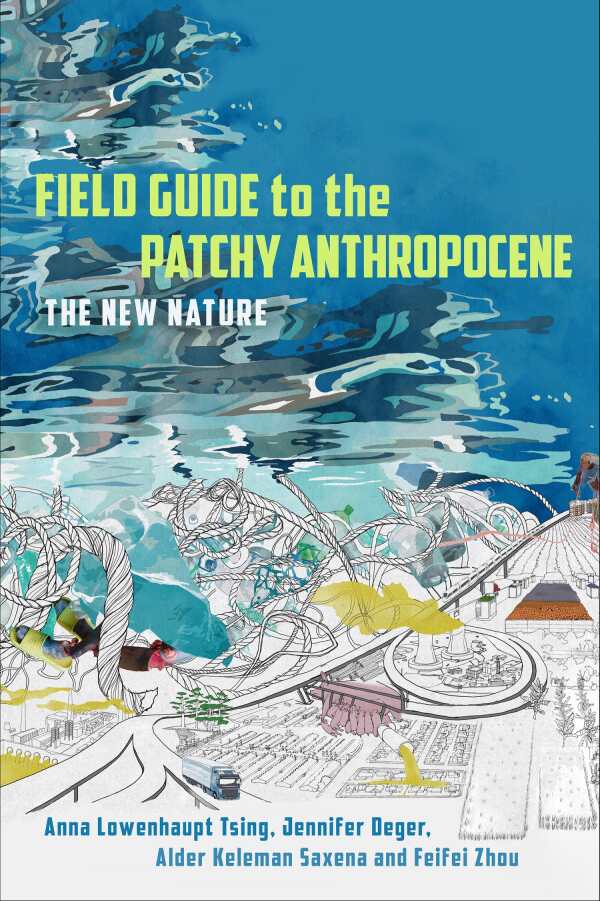Field Guide to the Patchy Anthropocene
The New Nature
Field Guide to the Patchy Anthropocene looks beyond the monolithic perception of the climate crisis and presents a methodology of observing and identifying socioecological “patches” of human-effected change.
Coauthored by the academic alliance of Anna Lowenhaupt Tsing, Jennifer Deger, Alder Keleman Saxena, and Feifei Zhou, the book cites numerous examples of nature’s counteractions to human interference. The current Anthropocene era—caused by “human-influenced environmental change”—involves the entire planet. But within the Anthropocene are more localized “patches” resulting in troubling ecological, social, and economic consequences.
A major influence upon patch development, the book notes, are feral beings, “transformed by human infrastructure” to become something between wild and domestic, like the rats and other vermin transported during the horrific slave trade, as well as the mosquitoes on board that weren’t originally inclined to bite humans, but that evolved to become human-loving vectors of deadly plagues. The book also recounts the impact of the water hyacinth plant: once coveted by botanical gardens worldwide, its transport beyond the Amazon in the late 1800s resulted in global proliferation, clogged waterways, and even famine. And North American bullfrogs brought to Latin America and Asia as low-cost meat sources often escaped into the wild, where they ate other native frogs and spread diseases.
Nuclear disasters, industrial pollution, deforestation, and exploitation of ocean resources have also created environmental shifts and a new “feral geography.” While the general impacts of such natural histories are negative, the patches are used to reveal the extraordinary adaptability of animal, plant, and insect life. Methods of reversing damage are detailed and the Feral Atlas project (an online, interactive resource to promote patch identification and involvement) is promoted.
Fascinating and focused, this environmental resource text stresses the need for a multidisciplinary, collective consciousness in combating planetary change.
Reviewed by
Meg Nola
Disclosure: This article is not an endorsement, but a review. The publisher of this book provided free copies of the book to have their book reviewed by a professional reviewer. No fee was paid by the publisher for this review. Foreword Reviews only recommends books that we love. Foreword Magazine, Inc. is disclosing this in accordance with the Federal Trade Commission’s 16 CFR, Part 255.

